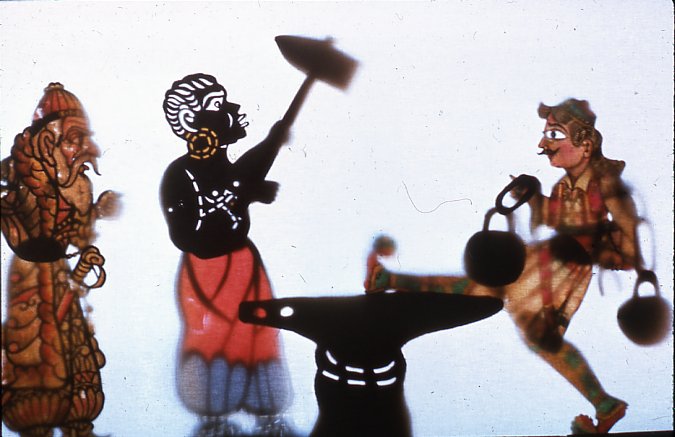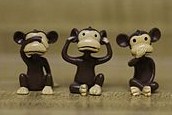The other night we were watching Vicente Aranda‘s two El Lute films, which recreate the late 20th century tinker outlaw Eleuterio Sánchez‘s version of his exploits. In the second, Mañana seré libre, El Lute/Imanol Arias is cornered in a Málaga street, survives the best ever parody of exaggerated film firefights (I hope that’s what it is), and then runs away, says somone here, “like a gypsy”:
Long before we started assuming that reality came out of Mark Fowler’s toaster with pictures, George Borrow touched on this notion in The Zincali:
One of the most remarkable features in the history of Gypsies is the striking similarity of their pursuits in every region of the globe to which they have penetrated; they are not merely alike in limb and in feature, in the cast and expression of the eye, in the colour of the hair, in their walk and gait, but everywhere they seem to exhibit the same tendencies, and to hunt for their bread by the same means as if they were not of the human but rather of the animal species, and in lieu of reason were endowed with a kind of instinct which assists them to a very limited extent and no farther.
In no part of the world are they found engaged in the cultivation of the earth, or in the service of a regular master; but in all lands they are jockeys, or thieves, or cheats, and if ever they devote themselves to any toil or trade it is assuredly in every material point one and the same. We have found them above, in the heart of a wild mountain, hammering iron, and manufacturing from it instruments either for their own use or that of the neighbouring towns and villages. They may be seen employed in a similar manner in the plains of Russia, or in the bosom of its eternal forests; and whoever inspects the site where a horde of Gypsies has encamped, in the grassy lanes beneath the hazel bushes of merry England, is generally sure to find relics of tin and other metal, avouching that they have there been exercising the arts of the tinker or smith. Perhaps nothing speaks more forcibly for the antiquity of this sect or caste than the tenacity with which they have uniformly preserved their peculiar customs, since the period of their becoming generally known; for, unless their habits had become a part of their nature, which could only have been effected by a strict devotion to them through a long succession of generations, it is not to be supposed that after their arrival in civilized Europe they would have retained and cherished them, precisely in the same manner, in the various countries where they found an asylum.
Borrow has been slagged for stuff like this by American academics who, trumping Fowler, would have us believe that reality comes not out of toasters, but out of books. However, while Borrow’s work is rife with exaggeration and invention, the belief that it is possible to distinguish gypsies from payos by their biomechanics was and is widespread and respectable among educated, non-Nazi Europeans. A random example from Peter D Bell in Peasants in Socialist transition: life in a collectivized Hungarian village:
[A]s Csalog [Kilenc cigány] points out, even if their facial features are no different, many Gypsies even in the streets of Budapest can be identified by their gait, gestures, and general body movements.
And this shouldn’t surprise: walking style is a common and powerful non-genetic social and ethnic marker, as Joseph Anthony Amato notes at some length in On foot: a history of walking.
My commenter suggests that gypsies run differently because they are far less likely to attend school than the general population and thus don’t learn to run like PE teachers, but that wouldn’t explain pre-universal education sightings like Borrow.
More research is obviously required, but, while much of YouTube is devoted to home-made films of gypsy dancers, other forms of athletics are sadly lacking. I guess Michael Jackson’s version of Walk like an Egyptian doesn’t really count either.
Similar posts
- Phoney Spanish gypsy dancers at the 1901 Pan-American Exposition in Buffalo, New York?
The Pan-American Exposition in Buffalo in 1901 is now remembered mainly for the assassination of McKinley by a Polish-American anarchist follower - Gypsy madonna, madonna gypsy
Who’s copying - How many spokes should the gypsy chakra have?
A Barcelona scrap-metal dealer only has 12 on the favicon on his website. - FollowTheBaldie.com review
I’m terrible at collecting testimonials, but here, with permission, is an extract from a thoughtful longer piece by a Chicago woman - Esta quer siñela de undibel
A selection of Spanish Romani religious


A good post! Well I would say that, wouldn’t I?
I was listening the other night to the interview/recordings Jelly Roll Morton made with Alan Lomax, and there’s the same 90% brilliant arrogance across a breathtaking range of material, mixed with 10% bluff. Read the armchair literary-construction-of-society brigade and weep.
I’m impressed. Slagging off both the jihadists and the gypsies in one day!
Coincidentally, I was listening to JRM last night.
Gestures are part of one’s cultural heritage. I’ve always been amazed at how many space aliens can clearly be identified as Americans. Just watch series like Star Treck…
… but this madness took over, where it was bad manners to mention that most Chinese immigrants spit because they were poor and oppressed, but OK to laugh at Americans because they were rich and evil.
As I say, I don’t actually know if gypsies run differently from any other (self-)imagined group, but it’s the kind of thing that’s still difficult to talk about because of this school of thought with immense institutional power and houses in the leafy suburbs that says:
1) They don’t run any differently, and anyone who says they do is a racist and Adolf Hitler.
2) (In private) Ok, they may run differently, but if we ignore it or throw money at it they’ll gradually start running like us and we’ll all be identical pods in the best of all possible worlds.
Fail!
You Brits got the Ministry of Silly Walks, which, especially because it’s only an imagined one, is one of the greatest contributions on the issue at large.
Fair enough, but when are you going to take on the real gait-related issue of our time?
Namely, why is it Spanish people don’t know how to walk properly? It’s a good job they are incapable of trvelling at more than 2 km per hour, if they could move at the same speed as British people, thousands would die each year in pedestrian accidents.
Watching a Spaniard moving through a crowd is like watching a half-blind pensioner attempting to park a whale in the Labyrinth at Knossos. That’s perhaps why they value the art of the matador so highly, many Spanish people have never actually seen somebody manage to succefully step out of the way except on the bullfighting.
I refer the right honourable to my posts on Streetwalking, Pavement proxemics and Sblood Spaniard you get no wall here, and to my General observations in Referendums on independence are for pussies.
Not the ideal thread, but I think more people should be aware of another (not totally unrelated) kind of “get out of my way” attitude.
http://www.strubell.cat/blog/1449/lobertura-deduardo-punset
No use posting a comment to try make StrubellTroete see he’s a proto-fascist, I inform. But anybody got an idea how to spread the word efficiently, especially abroad?